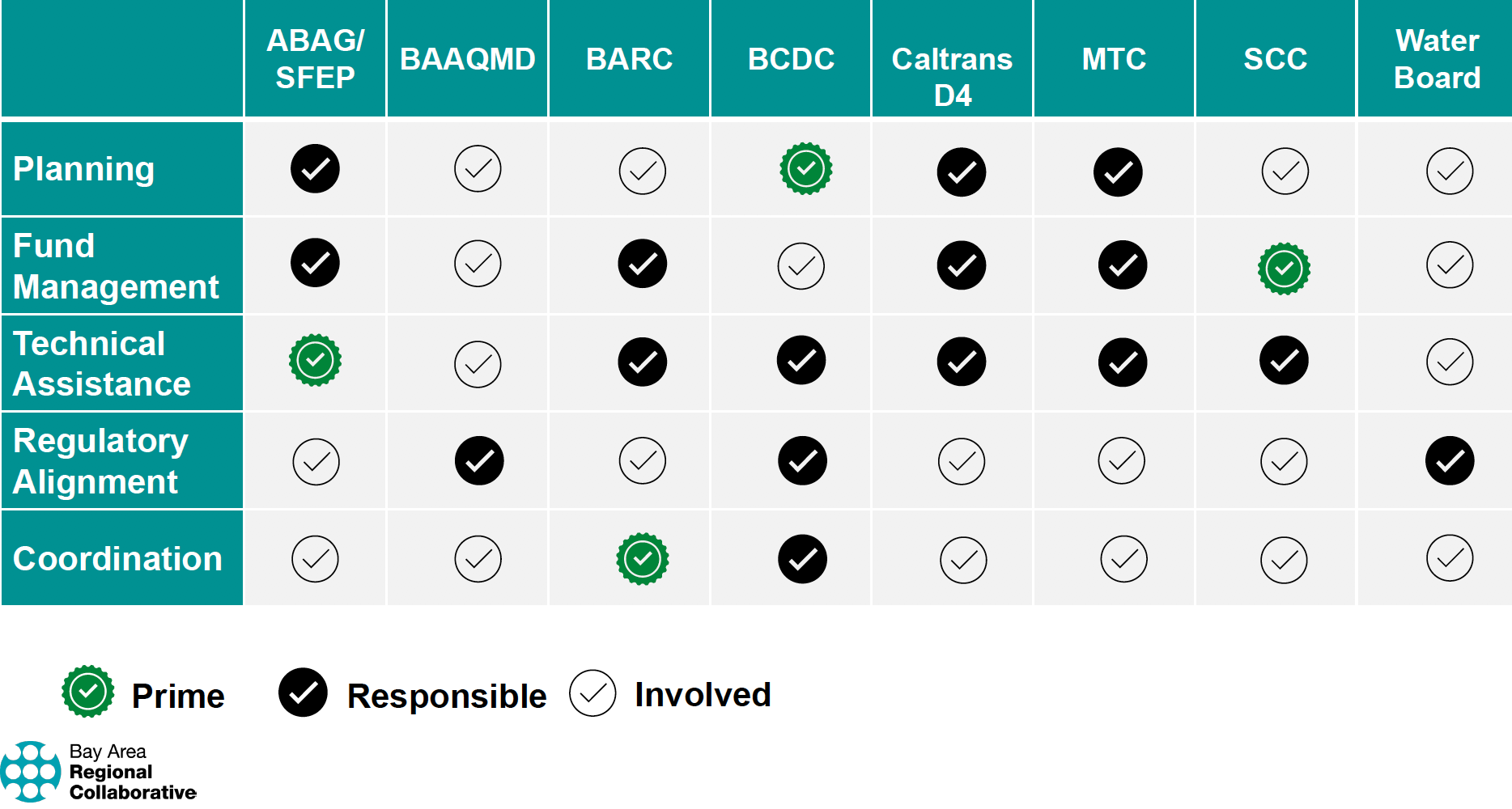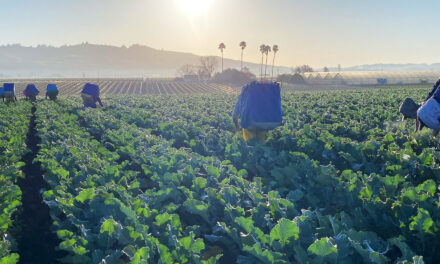Memo Distills Joint Approach to Flood Protection
With the region facing projected costs of at least $110 billion to protect its shores against rising waters, the failure to coordinate efforts on regional funding proposals can have serious consequences—an issue that was showcased recently when two local agencies both applied for the same multi-million-dollar federal grant program.
“This Federal agency only wanted one applicant from each region of the country,” says Allison Brooks of the Bay Area Regional Collaborative. “That’s the kind of miscommunication that can cost literally millions, where we end up not accessing the big dollars that we need.”
Avoiding similar snafus is one goal of a new Memorandum of Understanding approved on July 19 by seven regional and state agencies, committing them to work together to identify, prioritize and deliver high-priority, multi-benefit projects to reduce flood risks along the shoreline.
“This is a historic moment, when we lay out how we can use all our regulatory tools, all our expertise, all our strengths to work together to address the threat of sea level rise to our region,” said BARC chair and Berkeley mayor Jessie Arreguin at the July meeting.
The seven agencies include the Association of Bay Area Governments, the Bay Area Air Quality Management District, the California State Coastal Conservancy, CalTrans District 4, the Metropolitan Transportation Commission, the San Francisco Bay Conservation and Development Commission, and the San Francisco Bay Regional Water Quality Control Board.
The MOU establishes the first coordinated regional strategy to fund and deliver the types of projects the Bay Area will need to protect vulnerable communities from the effects of climate change. It delineates the roles and responsibilities of each agency with regard to the different aspects of developing and executing adaptation projects. The agreement identifies these core functional areas as planning, fund management, technical assistance, regulatory alignment and coordination.
Roles and responsibilities for the seven agencies as laid out in the new MOU. Source: BARC
Other Recent Posts
ESA
ESA is an environmental engineering firm that does restoration and resilience projects.
Gleaning in the Giving Season
The practice of collecting food left behind in fields after the harvest is good for the environment and gives more people access to produce.
New Study Teases Out Seawall Impacts
New models suggest that sea walls and levees provide protection against flooding and rising seas with little effect on surrounding areas.
Oakland High Schoolers Sample Local Kayaking
The Oakland Goes Outdoors program gives low-income students a chance to kayak, hike, and camp.
Growing Better Tomatoes with Less Water
UC Santa Cruz researchers find the highly-desired ‘Early Girl’ variety yields more tomatoes under dry-farmed conditions.
Santa Clara Helps Homeless Out of Harm’s Way
A year after adopting a controversial camping ban, Valley Water is trying to move unsheltered people out of the cold and rain.
The Race Against Runoff
San Francisco redesigns drains, parks, permeable pavements and buildings to keep stormwater out of the Bay and build flood resilience.
Learning the Art of Burning to Prevent Wildfire
In Santa Rosa’s Pepperwood Preserve, volunteers are learning how controlled fires can clear out natural wildfire fuel before it can spark.
Martinez Residents Want More Than Apologies — They Want Protection
After a 2022 release of toxic dust and a February 2025 fire, people in the northeast Bay town are tired of waiting for safety improvements.
Weaving Fire Protection Out Of What’s Already There
A new Greenbelt Alliance report shows how existing vineyards, grasslands, and managed forests can slow wildfire and save vulnerable homes.
“We know that climate change is a huge regional problem that needs regional solutions and regional coordination from the leaders of the Bay Area agencies,” says SF Water Board chair Eileen White. “Instead of competing for different resources, tackling the same problems, we will be much more effective in addressing climate change by working together. We can achieve more and be strategic about what funding we want to pursue.”
The MOU’s objectives include identifying priority projects through a process that incorporates local sea level rise adaptation plans, supporting multi-jurisdiction partnerships, and helping cities, counties and special districts plan and fund climate adaptation projects.
Len Materman of the San Mateo County Flood and Sea Level Rise Resiliency District says his agency is “grateful to the State and regional agencies that developed the MOU for understanding the urgency of planning and building resilience to the impacts of climate change.”
“We need unprecedented coordination to prioritize flood risk management projects in the places that need them most,” says ABAG Executive board Vice President Bella Ramos. “We must accelerate our pace and plan at a scale commensurate with the risk. This MOU is an important step.”











